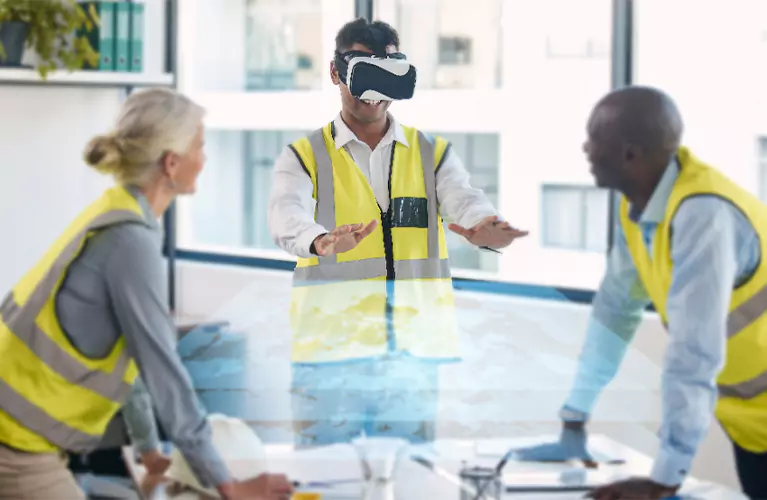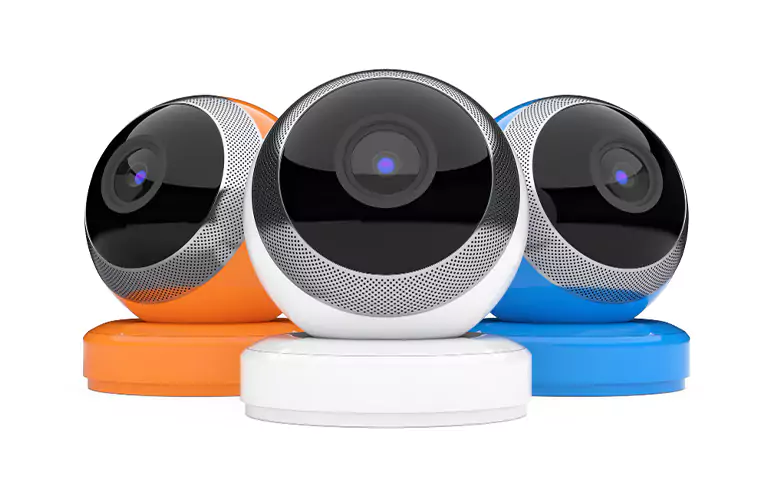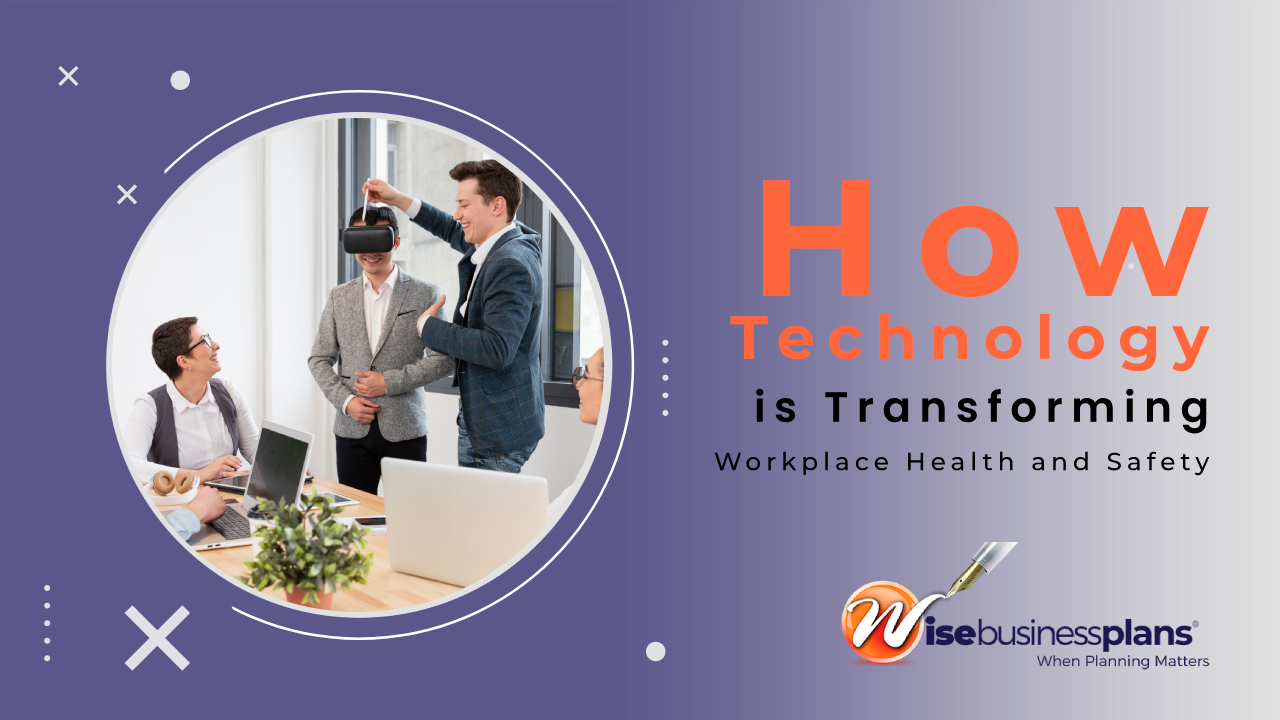How Technology is Transforming Workplace Health and Safety
Table of Contents
- Real-Time Monitoring and Detection Systems
- Wearable Technology for Workers' Safety
- AI and Automation in Hazard Management
- Data-Driven Safety Protocols
- Integrating Safety Innovations into Business Strategy
- Benefits of Safety Innovations in Business Planning
- Enhanced Employee Retention
- Reduced Operational Costs
- Improved Reputation and Brand Value
- Compliance and Risk Mitigation
- Strategic Planning and Future Growth
- The Future of Workplace Safety Tech
- The Road Ahead: Innovations in Workplace Safety
Technology has always been central to health and safety in the workplace. However, recent innovations like AI and the Internet of Things (IoT) have hugely increased its role. With advanced tools and systems, companies can now monitor environments in real-time, identify hazards early, and protect employees more effectively.
From smart wearables to automated safety checks, these innovations are not only increasing business efficiency but also saving lives. This article looks at these and other innovations, we also get the crystal ball out as we predict just what the future holds for workplace health and safety.

Real-Time Monitoring and Detection Systems
Advancements like IoT and AI among others have enabled greater levels of real-time monitoring than would’ve been considered possible a few years ago. These systems provide immediate insights into potential hazards, allowing businesses to take swift action to negate risks. By continuously tracking environmental factors, such as air quality and equipment performance, companies can ensure safer working conditions for their employees.
Among the key benefits of such advancements are:
- Early warning systems: Devices like vape monitors and fire alarms detect hazardous substances or conditions before they become dangerous.
- Improved response times: Monitoring systems alert safety personnel to incidents in real time, reducing the lag between detection and action.
- Reduced workplace injuries: Continuous tracking of factors such as temperature, humidity, and air quality lowers the risk of accidents or accidental exposure to harmful substances.
Monitoring such variables used to be cumbersome and commonly used disparate systems working independently. This is no longer the case. Technology has allowed for real-time monitoring using interconnected systems to proactively manage risks and ensure compliance with safety regulations.
Thinking of integrating safety technologies into your business?
Hire our professional business plan writers now!
Wearable Technology for Workers' Safety
Wearable technology has moved from the pages of a science fiction novel to real-world applications in a remarkably short period of time. Today, advanced devices worn directly by workers collect data on factors such as fatigue, posture, and environmental exposure, helping prevent accidents and promoting overall health.
Companies are increasingly adopting these tools to ensure their workforce remains safe in high-risk environments.
Among the many benefits of wearable technology in a health and safety context are:
- Fatigue monitoring: Devices track worker fatigue levels and alert management before exhaustion leads to errors.
- Posture correction: Wearables monitor body positioning, promoting better ergonomics and reducing the risk of musculoskeletal injuries.
- Environmental exposure tracking: Sensors measure exposure to harmful substances, notifying workers when thresholds are exceeded.
Many of the technologies incorporated into such devices aren’t, in themselves, new. However, their integration into such devices as smart helmets that monitor impact and fatigue, exoskeletons that reduce strain during heavy lifting, and smart vests is transforming workplace safety.
AI and Automation in Hazard Management

AI was one of those technologies whose benefits seemed to perpetually lie somewhere just over the horizon. All that changed with the sudden emergence of technologies like Large Language Models and generative AI. Now, AI and automation are reshaping hazard management by improving how businesses predict, identify, and address potential safety risks. These technologies use advanced algorithms and real-time data to anticipate workplace hazards, allowing companies to take proactive measures before accidents happen.
Key benefits of AI and automation in hazard management include:
- Predictive analytics: AI systems analyze historical data and current conditions to forecast potential risks, giving companies time to prevent incidents.
- Automated safety inspections: Drones, robots, and AI-powered machines can conduct safety checks more efficiently, reducing the need for manual inspections.
- Improved hazard detection: AI-driven tools can quickly analyze complex data and detect issues that human supervisors might miss, minimizing oversight.
AI, especially when paired with companion technologies like IoT and cloud computing, is transforming health and safety in the workplace. It’s also worth noting that these are still considered new technologies and are still evolving at a rapid pace.
Data-Driven Safety Protocols

The importance of data in health and safety is another area that has grown exponentially in recent years. In the modern workplace, data is transforming health and safety by allowing for more informed decision-making. Companies are now able to collect vast amounts of data from wearables, monitoring systems, and safety audits. This information allows them to design and implement safety protocols tailored to specific environments and workforce needs, leading to more effective hazard prevention. Of course, AI is also helping to glean the necessary insights from these vast pools of data.
Key benefits of data-driven safety protocols include:
- Targeted training: Data reveals specific areas where additional employee training is needed, improving overall safety awareness.
- Enhanced compliance: Regularly updated data ensures that companies remain compliant with evolving safety regulations.
- Accurate risk assessments: Continuous data collection helps identify high-risk areas and minimize accidents.
AI thrives on data; it is effectively its fuel. By partnering AI systems with the vast amounts of data that companies routinely collect, workplace safety can be greatly enhanced.
Integrating Safety Innovations into Business Strategy

As businesses strive to achieve their goals, integrating health and safety innovations into their overall strategy is not just a regulatory necessity; it’s a strategic advantage. When developing a business plan, incorporating a robust health and safety framework can significantly impact operational efficiency, employee morale, and financial performance.
Benefits of Safety Innovations in Business Planning
Enhanced Employee Retention
A commitment to workplace safety fosters a positive work environment, which can enhance employee satisfaction and retention. When employees feel safe and valued, they are more likely to be engaged and productive.
Reduced Operational Costs
Investing in technology and systems that improve safety can lead to lower injury rates, which translates to reduced workers’ compensation claims and lower insurance premiums. Over time, these savings can significantly boost the bottom line.
Improved Reputation and Brand Value
Companies that prioritize employee safety and well-being enhance their reputation in the market. This commitment can attract customers and clients who value corporate responsibility, ultimately leading to increased sales and loyalty.
Compliance and Risk Mitigation
By incorporating advanced monitoring systems and data-driven safety protocols, businesses can ensure compliance with regulations, minimizing the risk of legal issues or fines. A proactive approach to safety management can also help identify potential hazards before they escalate into serious incidents.
Strategic Planning and Future Growth
As technology continues to evolve, businesses that integrate health and safety innovations into their planning will be better positioned to adapt to changing industry standards and workforce expectations. This forward-thinking approach not only safeguards employees but also sets the foundation for sustainable growth and long-term success.
By recognizing the critical link between workplace safety and business success, companies can create a comprehensive business plan that prioritizes the health and well-being of their employees. This proactive stance not only protects their most valuable asset—human capital—but also sets the foundation for sustainable growth and long-term success.
Need help with your business plan?
Check out our free sample business plan today!
The Future of Workplace Safety Tech
Time to get the crystal ball out and see if we can predict what is just around the corner as far as technology and workplace safety go. Predicting the future of technology is always tricky, but the following are fairly safe bets.
Key future trends include:
- VR-based training: This will provide increasingly realistic scenarios for workers to practice safety protocols.
- Advanced AI algorithms: As the underlying technology develops, AI will continue to improve real-time hazard prediction and response.
- Wearable tech advancements: New wearables with integrated health monitoring and environmental sensing will enhance safety even further.
The ongoing integration of these technologies will continue to shape workplace health and safety, pushing boundaries and setting new standards. Review our sample business plans for integrating health tech solutions.
The Road Ahead: Innovations in Workplace Safety
We are living in an age of unprecedented technological advancement. While the role of AI in many aspects of our daily lives continues to prove controversial, its use in enhancing workplace safety should be heralded. Along with advanced sensors, wearable technology, and the power of data, these innovations are setting new benchmarks for safety.




![How to Implement Security Measures That Actually Protect Your Business [Step-by-Step Guide]](https://wisebusinessplans.com/wp-content/uploads/2025/06/how-to-implement-security-measures-that-actually-protect-your-business-1024x576.webp)











